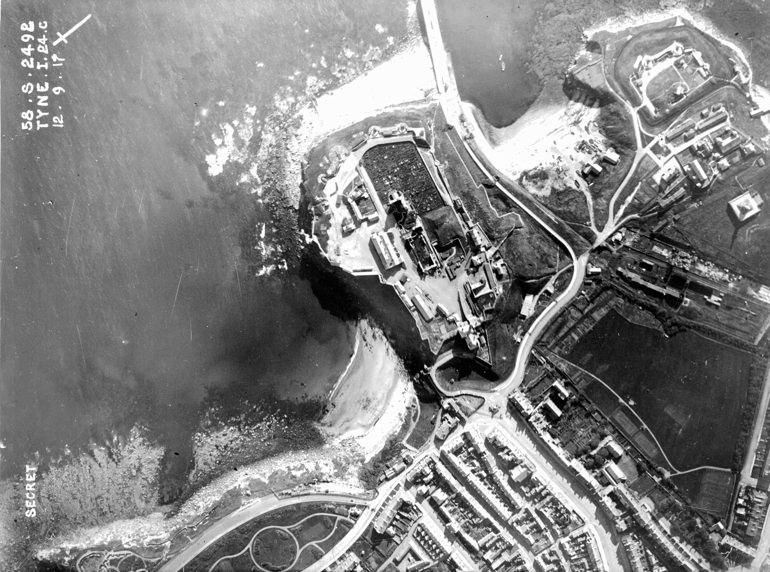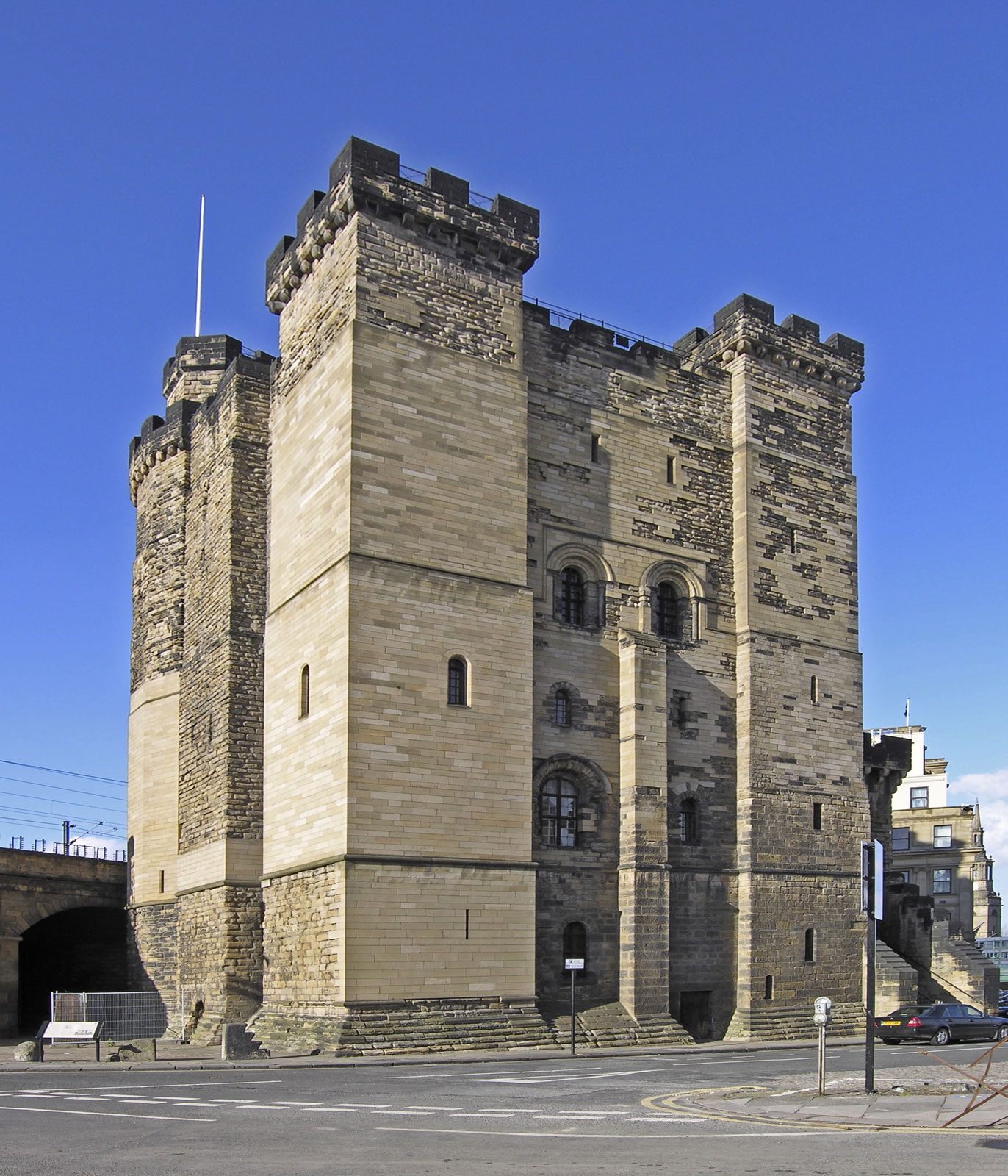|
Susan Mary Auld
Susan Mary Auld (10 January 1915 – 9 March 2002), born Susan Denham Christie in Tynemouth, was the first woman to graduate as a naval architect from Durham University. Family background and education Susan Auld came from a family of naval engineers. Her grandfather Charles John Denham Christie (1830–1905) was a founder of the company that later became the Swan Hunter Group of shipyards, and her father John Denham Christie (''d''. 1950) was company chairman for many years. Her mother was Mary Martin. She received home schooling until the age of 14, when she was sent to Cheltenham Ladies' College. In 1932 she began to study naval architecture under Sir Westcott Abell at Durham University and graduated with a BSc in 1936, the first English woman to be awarded a degree in naval architecture (but see Dorothy Rowntree). She was also the first woman to be admitted as a student member to the North East Coast Institution of Engineers and Shipbuilders (October 1932) Katharine_Par ... [...More Info...] [...Related Items...] OR: [Wikipedia] [Google] [Baidu] |
Tynemouth
Tynemouth () is a coastal town in the metropolitan borough of North Tyneside, North East England. It is located on the north side of the mouth of the River Tyne, hence its name. It is 8 mi (13 km) east-northeast of Newcastle upon Tyne. It is also home to Tynemouth Priory. Historically part of Northumberland until 1974, the town was a county borough which included the nearby town of North Shields. In 2001, the population of the town was recorded at 17,056. History The headland towering over the mouth of the River Tyne has been settled since the Iron Age. The Romans may have occupied it as a signal station, though it is just north of the Hadrian's Wall frontier (the Roman fort and supply depot of Arbeia stands almost opposite it on the southern headland of the Tyne). In the 7th century a monastery was built in Tynemouth and later fortified. The headland was known as ''Pen Bal Crag''. The monastery was sacked by the Danes in 800, rebuilt, and destroyed again in 875, ... [...More Info...] [...Related Items...] OR: [Wikipedia] [Google] [Baidu] |
HMS Albion (R07)
} HMS ''Albion'' (R07), nicknamed "The Old Grey Ghost of the Borneo Coast", was a 22,000-ton light fleet carrier of the Royal Navy. Construction and modifications She was built by Swan Hunter & Wigham Richardson Ltd. Her keel was laid down on 23 March 1944 and she was launched on 6 May 1947 by Violet Attlee, wife of the British Prime Minister Clement Attlee.Hobbs 1996, p. 32. On 18 October 1949, she was under tow by tugs , ''Hendon'' and ''George V'' from Jarrow to Rosyth when ''Albion'' collided with from the Longstone Lighthouse. ''Maystone'' sank, ''Albion'' received a hole in her stern and started to sink. The three tugs attempted to beach her near St Abbs Head but were hampered when ''Hector'' became disabled when a tow rope wrapped around her propeller. The tug was sent from Rosyth to assist and the destroyer arrived and took ''Hector'' on tow until her crew managed to clear the propeller. ''Albion'' was successfully berthed at Rosyth with of water in her e ... [...More Info...] [...Related Items...] OR: [Wikipedia] [Google] [Baidu] |
Engineers From Tyne And Wear
Engineers, as practitioners of engineering, are professionals who invent, design, analyze, build and test machines, complex systems, structures, gadgets and materials to fulfill functional objectives and requirements while considering the limitations imposed by practicality, regulation, safety and cost. "Science is knowledge based on our observed facts and tested truths arranged in an orderly system that can be validated and communicated to other people. Engineering is the creative application of scientific principles used to plan, build, direct, guide, manage, or work on systems to maintain and improve our daily lives." The word ''engineer'' (Latin ) is derived from the Latin words ("to contrive, devise") and ("cleverness"). The foundational qualifications of an engineer typically include a four-year bachelor's degree in an engineering discipline, or in some jurisdictions, a master's degree in an engineering discipline plus four to six years of peer-reviewed professional ... [...More Info...] [...Related Items...] OR: [Wikipedia] [Google] [Baidu] |
People From Tynemouth
A person ( : people) is a being that has certain capacities or attributes such as reason, morality, consciousness or self-consciousness, and being a part of a culturally established form of social relations such as kinship, ownership of property, or legal responsibility. The defining features of personhood and, consequently, what makes a person count as a person, differ widely among cultures and contexts. In addition to the question of personhood, of what makes a being count as a person to begin with, there are further questions about personal identity and self: both about what makes any particular person that particular person instead of another, and about what makes a person at one time the same person as they were or will be at another time despite any intervening changes. The plural form "people" is often used to refer to an entire nation or ethnic group (as in "a people"), and this was the original meaning of the word; it subsequently acquired its use as a plural form of p ... [...More Info...] [...Related Items...] OR: [Wikipedia] [Google] [Baidu] |
British Naval Architects
British may refer to: Peoples, culture, and language * British people, nationals or natives of the United Kingdom, British Overseas Territories, and Crown Dependencies. ** Britishness, the British identity and common culture * British English, the English language as spoken and written in the United Kingdom or, more broadly, throughout the British Isles * Celtic Britons, an ancient ethno-linguistic group * Brittonic languages, a branch of the Insular Celtic language family (formerly called British) ** Common Brittonic, an ancient language Other uses *'' Brit(ish)'', a 2018 memoir by Afua Hirsch *People or things associated with: ** Great Britain, an island ** United Kingdom, a sovereign state ** Kingdom of Great Britain (1707–1800) ** United Kingdom of Great Britain and Ireland (1801–1922) See also * Terminology of the British Isles * Alternative names for the British * English (other) * Britannic (other) * British Isles * Brit (other) * Br ... [...More Info...] [...Related Items...] OR: [Wikipedia] [Google] [Baidu] |
1915 Births
Events Below, the events of World War I have the "WWI" prefix. January *January – British physicist Sir Joseph Larmor publishes his observations on "The Influence of Local Atmospheric Cooling on Astronomical Refraction". * January 1 ** WWI: British Royal Navy battleship HMS ''Formidable'' is sunk off Lyme Regis, Dorset, England, by an Imperial German Navy U-boat, with the loss of 547 crew. ** Battle of Broken Hill: A train ambush near Broken Hill, New South Wales, Australia, is carried out by two men (claiming to be in support of the Ottoman Empire) who are killed, together with 4 civilians. * January 5 – Joseph E. Carberry sets an altitude record of , carrying Capt. Benjamin Delahauf Foulois as a passenger, in a fixed-wing aircraft. * January 12 ** The United States House of Representatives rejects a proposal to give women the right to vote. ** ''A Fool There Was'' premières in the United States, starring Theda Bara as a ''femme fatale''; she quickly b ... [...More Info...] [...Related Items...] OR: [Wikipedia] [Google] [Baidu] |
Newcastle Upon Tyne
Newcastle upon Tyne ( RP: , ), or simply Newcastle, is a city and metropolitan borough in Tyne and Wear, England. The city is located on the River Tyne's northern bank and forms the largest part of the Tyneside built-up area. Newcastle is also the most populous city of North East England. Newcastle developed around a Roman settlement called Pons Aelius and the settlement later took the name of a castle built in 1080 by William the Conqueror's eldest son, Robert Curthose. Historically, the city’s economy was dependent on its port and in particular, its status as one of the world's largest ship building and repair centres. Today, the city's economy is diverse with major economic output in science, finance, retail, education, tourism, and nightlife. Newcastle is one of the UK Core Cities, as well as part of the Eurocities network. Famous landmarks in Newcastle include the Tyne Bridge; the Swing Bridge; Newcastle Castle; St Thomas’ Church; Grainger Town includin ... [...More Info...] [...Related Items...] OR: [Wikipedia] [Google] [Baidu] |
John Gwynne Auld
John is a common English name and surname: * John (given name) * John (surname) John may also refer to: New Testament Works * Gospel of John, a title often shortened to John * First Epistle of John, often shortened to 1 John * Second Epistle of John, often shortened to 2 John * Third Epistle of John, often shortened to 3 John People * John the Baptist (died c. AD 30), regarded as a prophet and the forerunner of Jesus Christ * John the Apostle (lived c. AD 30), one of the twelve apostles of Jesus * John the Evangelist, assigned author of the Fourth Gospel, once identified with the Apostle * John of Patmos, also known as John the Divine or John the Revelator, the author of the Book of Revelation, once identified with the Apostle * John the Presbyter, a figure either identified with or distinguished from the Apostle, the Evangelist and John of Patmos Other people with the given name Religious figures * John, father of Andrew the Apostle and Saint Peter * ... [...More Info...] [...Related Items...] OR: [Wikipedia] [Google] [Baidu] |
D-Day
The Normandy landings were the landing operations and associated airborne operations on Tuesday, 6 June 1944 of the Allied invasion of Normandy in Operation Overlord during World War II. Codenamed Operation Neptune and often referred to as D-Day, it was the largest seaborne invasion in history. The operation began the liberation of France (and later western Europe) and laid the foundations of the Allied victory on the Western Front. Planning for the operation began in 1943. In the months leading up to the invasion, the Allies conducted a substantial military deception, codenamed Operation Bodyguard, to mislead the Germans as to the date and location of the main Allied landings. The weather on D-Day was far from ideal, and the operation had to be delayed 24 hours; a further postponement would have meant a delay of at least two weeks, as the invasion planners had requirements for the phase of the moon, the tides, and the time of day that meant only a few days each month wer ... [...More Info...] [...Related Items...] OR: [Wikipedia] [Google] [Baidu] |
HMS Anson (79)
HMS ''Anson'' was a battleship of the Royal Navy, named after Admiral George Anson. She was built by Swan Hunter and Wigham Richardson Shipyard on the River Tyne and launched on 24 February 1940, being completed on 22 June 1942. Her completion was delayed to allow the fitting of fire-control radar and additional anti-aircraft weapons. She was originally to have been named ''Jellicoe'', but was renamed ''Anson'' in February 1940. ''Anson'' saw service in the Second World War, escorting nine Russian convoys in the Arctic by December 1943. She took part in diversionary moves to draw attention away from Operation Husky in July 1943. In October the same year she took part in Operation Leader. In February 1944 she provided cover for Operation Tungsten, the successful air strike against the . Rear Admiral Cecil Harcourt accepted the surrender of Japanese forces occupying Hong Kong on board ''Anson'' in August 1945, and after the end of the war the vessel became the flagship o ... [...More Info...] [...Related Items...] OR: [Wikipedia] [Google] [Baidu] |



_1938.jpg)


_firing_guns_in_North_Sea_c1942.jpg)